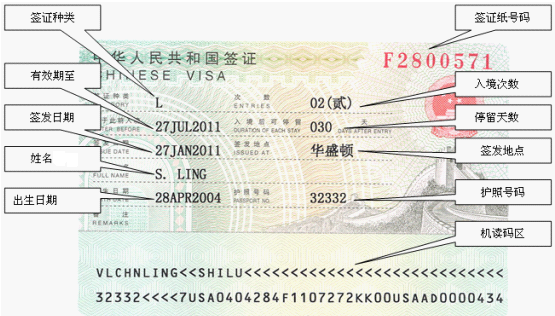
Visiting China—whether for leisure, business, study, or family reasons—begins with securing the correct visa. Although the basic application process is straightforward, attention to detail can mean the difference between a smooth approval and an unexpected delay. This guide walks you through the essential requirements, step-by-step procedures, special circumstances, frequently asked questions, and expert tips for a successful Chinese visa application in 2025.
1. Choosing the Right Visa Category
Tourist Visa (L)
• Purpose: Leisure travel and family visits
• Entries: Single, double, or multiple
• Typical stay: 30–90 days per entry
• Key docs: Travel itinerary, proof of funds, hotel and flight bookings
Business Visa (M)
• Purpose: Meetings, conferences, trade shows
• Entries: Single, double, or multiple
• Key docs: Invitation letter from Chinese partner, business registration
Work Visa (Z)
• Purpose: Employment in Mainland China
• Entries: Single (convertible to a residence permit)
• Key docs: Official work permit, employment contract, health certificate
Student Visa (X)
• Purpose: Academic study (over 6 months) or short courses
• Categories: X1 (long-term), X2 (short-term)
• Key docs: Admission notice, proof of financial support, insurance
Family Reunion Visa (Q)
• Purpose: Visiting Chinese citizens or permanent residents
• Entries: Single or multiple
• Key docs: Invitation letter, proof of kinship, host’s residence permit
Transit Visa (G)
• Purpose: En route to a third country
• Validity: Up to 7 days
• Key docs: Confirmed onward ticket, visa for next destination (if required)
Other Types: Crew (C), Journalist (J), Diplomatic (D), Official (O), Talent (R), and more.
2. Step-by-Step Application Process
- Download and Complete the Form
Obtain the latest visa application form from your local Chinese embassy or consulate website. Fill it out legibly and sign where required. - Gather Supporting Documents
– Passport: Valid for at least six months beyond entry, with one blank visa page.
– Photo: One recent, color, 33×48 mm passport-style photograph.
– Itinerary: Round-trip tickets and confirmed accommodation.
– Proof of Funds: Recent bank statements or pay slips.
– Additional Papers: Invitation letters, admission notices, work permits, or other documents specific to your visa category. - Submit Your Application
Apply in person at an embassy, consulate, or authorized visa center. Some locations accept postal or courier submissions—confirm with your local mission. - Pay the Fee
Visa fees vary by nationality and type. Check the schedule and accepted payment methods on the consulate’s website. - Wait for Processing
– Standard: 4–10 business days
– Express: 2–5 business days (additional fee)
– Rush: Same-day in select locations - Collect Your Visa
Retrieve your passport in person or by mail, ensuring the visa type, validity dates, and personal details are correct.
3. Special Application Scenarios
72-Hour and 144-Hour Visa-Free Transit
Certain nationalities can transit through designated Chinese cities without a full visa. To qualify, you must hold:
- A valid passport from an eligible country
- Confirmed onward tickets to a third destination
- An entry point and exit point within the same or approved transit region
Hong Kong & Macau Travel Documents
Holders of SAR passports or travel permits enter the mainland under specific arrangements—no standard visa is needed for short visits, but separate entry permits apply.
Diplomatic and Official Visas
Diplomats and government officials follow a parallel process requiring formal notes from sponsoring agencies. Processing times and required documents differ from ordinary visas.
4. Frequently Asked Questions
Q1: Can I apply online?
Some consulates offer e-visa or online application services for specific categories. Always verify on your local mission’s website.
Q2: What if my visa is denied?
You will receive a refusal notice with reasons. Address the issues—such as missing documents or inconsistencies—and reapply.
Q3: Can I extend my visa in China?
Extensions vary by visa type. Tourist visas (L) are rarely extended, while business (M) and work (Z) visas may be prolongable through a local Public Security Bureau.
Q4: Do children need separate visas?
Yes. Each traveler—including infants—requires an individual application, passport, photo, and supporting documents.
Q5: Is travel insurance mandatory?
Not strictly for a visa, but strongly recommended to cover medical emergencies, trip cancellations, and other unforeseen events.
5. Expert Tips for a Smooth Application
- Start Early: Begin gathering documents at least one month before your planned departure.
- Verify Embassy Requirements: Rules can differ between consulates; always check your local office’s instructions.
- Ensure Document Clarity: Submit clear, legible copies and originals where required—avoid hand-written itineraries.
- Review Your Visa: Upon receipt, confirm that all details—name spelling, passport number, entry dates—are correct.
- Respect Your Visa Conditions: Overstaying or unauthorized activities can lead to fines, deportation, or future entry bans.
Conclusion
By understanding each visa category’s requirements, following a clear application process, and addressing special cases proactively, you can navigate China’s visa system with confidence in 2025. Whether you’re embarking on a cultural adventure in Yunnan, conducting business in Shanghai, or joining family in Beijing, thorough preparation is your best ally. Safe travels and welcome to China!











Leave a comment: